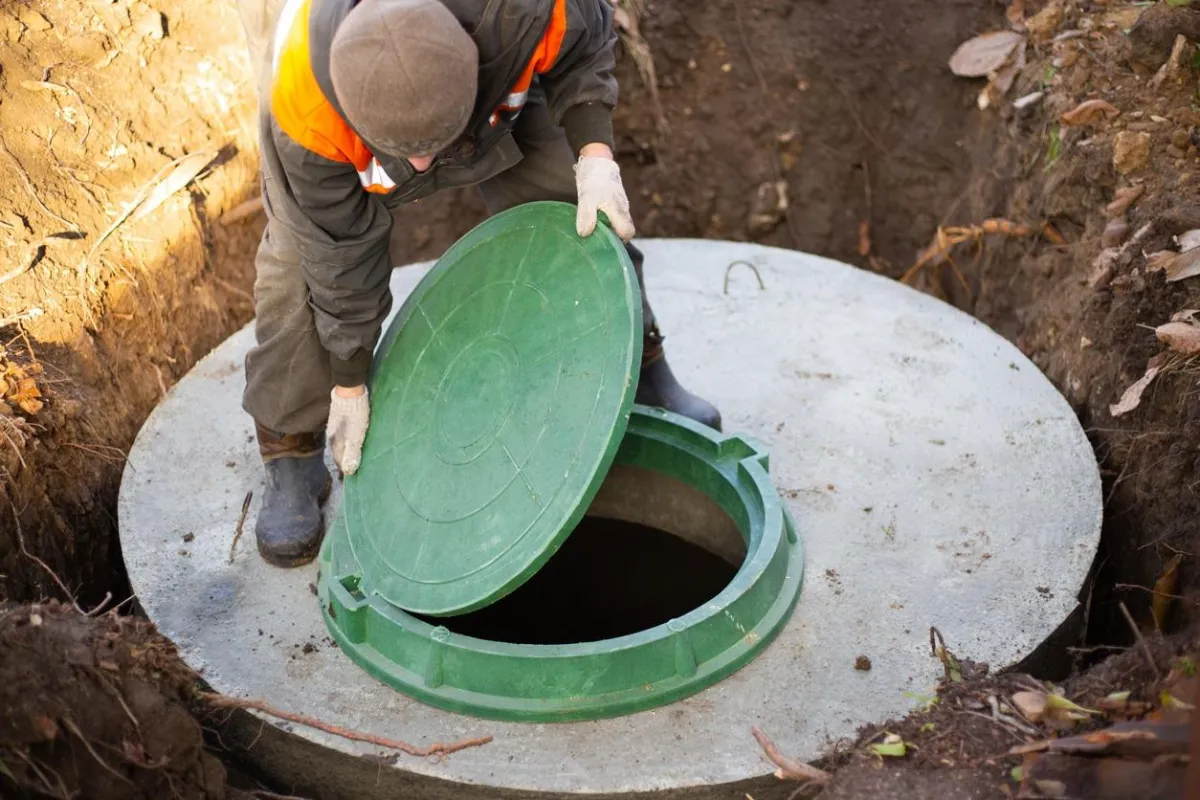How to Break Down Solids in a Septic Tank: A Homeowner's Complete Guide

Is your septic system showing signs of trouble? You might have noticed slow drains, unpleasant odors, or even backed-up toilets.
These common warning signs indicate that you need to learn how to break down solids in a septic tank. I understand how worrying these problems can be – they're not just inconvenient, they can also lead to expensive repairs if left unaddressed.
Let me share with you what I've learned from working with countless homeowners just like you who want to maintain their septic systems properly.
Understanding how to manage solid waste in your septic tank is crucial for preventing expensive repairs and protecting your home's value. Think of your septic system as your home's digestive system - it needs proper care to function effectively.
Understanding Your Septic System
Before we dive into solutions for breaking down solids, let's understand how your septic system works. According to the Environmental Protection Agency, a typical septic system processes hundreds of gallons of wastewater daily through a complex biological process. This natural process relies heavily on beneficial bacteria that break down waste materials.
Think of your septic tank as a living ecosystem, much like an underwater garden. Just as your garden needs the right soil conditions, water, and nutrients to thrive, your septic tank needs proper conditions and care to function effectively. The main players in this ecosystem are the beneficial bacteria that naturally digest solid waste.
When wastewater enters your tank, it separates into three layers:
The scum layer (floating materials)
The liquid layer (partially clarified water)
The sludge layer (heavy solids at the bottom)
Natural Methods to Break Down Solids
When considering what breaks down solids in septic tank systems, natural solutions often work best. The National Environmental Services Center recommends several eco-friendly approaches that work with your system's natural processes rather than against them.
1. Bacterial Additives
These helpful microorganisms are like tiny cleanup crews working 24/7 in your tank. Add beneficial bacteria to your system monthly through your toilet. These microscopic helpers naturally digest solid waste and keep your system flowing smoothly.
The best bacterial additives contain multiple strains of bacteria specifically chosen for their ability to break down different types of waste. Look for products that contain both aerobic and anaerobic bacteria species. The <Wastewater Treatment Association> recommends choosing products that:
Contain at least 5 different bacterial strains
Have a high bacteria count (billions per dose)
Include both aerobic and anaerobic species
Come from reputable manufacturers
2. Enzyme Treatments
Enzymes work like natural digestive aids for your septic system. Use enzyme-based treatments quarterly to help break down complex materials like proteins, fats, and cellulose. These treatments support the work of beneficial bacteria and help prevent solid buildup.
Different enzymes target specific types of waste:
Proteases break down proteins
Lipases digest fats and oils
Cellulases decompose paper products
Amylases process starches
3. Water Conservation
One often overlooked aspect of solid breakdown is proper water management. Reduce water usage to give bacteria more time to break down solids. Install water-saving fixtures throughout your home and spread out water usage throughout the day.
Safe Products for Solid Breakdown
Many homeowners ask us what to put in septic tank to break down solids. Here are proven solutions backed by the Septic System Research Institute:
Use septic-safe toilet paper that breaks down easily. Test your toilet paper by placing a sheet in a jar of water – it should begin breaking down within minutes.
Add biological additives monthly through any toilet. Choose products specifically formulated for septic systems.
Pour enzyme treatments quarterly through kitchen sink. Follow manufacturer dosing instructions carefully.
Consider adding yeast treatments for additional bacterial support. Regular baker's yeast can help boost bacterial activity
The best way to break down solids in a septic tank is to avoid harmful products that can disrupt the natural breakdown process. The National Sanitation Foundation warns against using:
Bleach or chlorine-based cleaners
Chemical drain cleaners
Anti-bacterial soaps
Chemical treatments marketed as "septic cleaners"
Excessive amounts of household cleaners
Professional Maintenance
Regular professional maintenance is essential for long-term septic health. The National Association of Wastewater Technicians recommends:
Inspection Schedule
Annual professional inspections
Pumping every 3-5 years (depending on usage)
Camera inspections every 5-7 years
Professional Services Should Include
Measuring sludge and scum layers
Checking inlet and outlet baffles
Inspecting tank walls for cracks
Testing effluent filters
Evaluating drain field condition
Cost-Effective Prevention
Understanding how to break down solids in a septic tank helps prevent expensive repairs. According to the Home Maintenance Association, regular maintenance costs approximately:
Monthly bacterial additives: $10-15
Quarterly enzyme treatments: $25-30
Annual inspection: $200-300
Pumping (every 3-5 years): $300-600
Compare these costs to major repairs:
Tank replacement: $5,000-8,000
Drain field replacement: $10,000-20,000
Emergency pumping: $500-800
By following these guidelines and maintaining a regular maintenance schedule, you can ensure your septic system remains healthy and efficient for years to come. Remember, the key to success is consistency in care and attention to detail.
With proper maintenance and the right approach to waste management, your septic system can provide reliable service for decades.
Your septic system is a valuable part of your home's infrastructure, and treating it with care will ensure it continues to serve you well. If you ever notice serious problems, don't hesitate to contact a certified professional for guidance on how to break down solids in a septic tank effectively.
Small Call to Action Headline

© 2025 | All Rights Reserved | Privacy Policy
